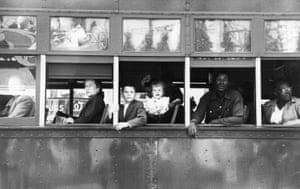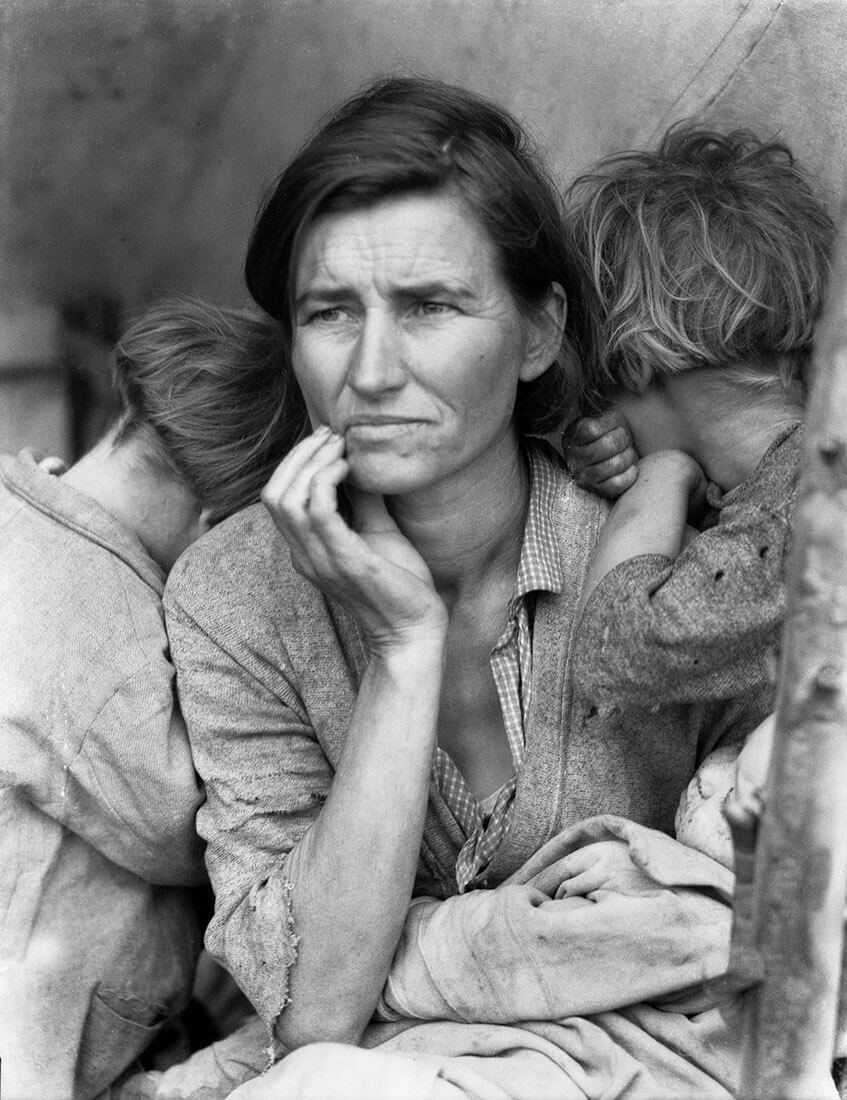PHOTOGRAPHIC IMAGE ANALYSIS
Image analysis is very important in your understanding of photography. Both from learning how an image is composed or structured to the actual content and meaning of an image. You may need to understand or find out its social, historical, or political context.
Choose one of the images below and in groups discuss and record your findings to report back and share with others.
IMAGE ANALYSIS | GROUP EXERCISE 1
Using the matrix TECHNICAL – VISUAL – CONCEPTUAL – CONTEXTUAL below work in small groups to analyse and interpret this image :

Who – what – where – how – why?
IMAGE ANALYSIS GROUP EXERCISE 2
Using the matrix TECHNICAL – VISUAL – CONCEPTUAL – CONTEXTUAL below work in small groups to analyse and interpret this image :

Analysing Robert Frank – Trolley, New Orleans
Who – what – where – how – why?
IMAGE ANALYSIS GROUP EXERCISE 3
Using the matrix TECHNICAL – VISUAL – CONCEPTUAL – CONTEXTUAL below work in small groups to analyse and interpret this image :

Who – what – where – how – why?
Image Analysis Group Exercise 4

Who – what – where – how – why?

Task
Create a blog post that includes the following…
- Title: Image Analysis
- Content : a range of images that you have learned about in the lesson (as above) including captions (title, date, artist etc)
- Technical attributes
- Visual Attributes
- Conceptual Attributes
- Contextual Attributes
…to show you knowledge and understanding, research skills and articulation of analysis and interpretation.
Extension : Representation, Standards and Ethics
Photographers (and artists in general) can bend, twist and manipulate the truth…they can influence how we understand the world.
THE AGE OF THE IMAGE
Watch this interesting documentary!
How we represent individuals and groups of people, change the context or meaning, and how fair we are with our methods has huge importance on the way we work…
THE HISTORY OF PHOTOGRAPHY
So far hopefully you have the chance to present your summer task and in groups discuss the role of photography and what it is and have gained an understanding of what an image is and how to analyse an image.
NOW we’re going to look at the HISTORY OF PHOTOGRAPHY.
First we’re going to watch Episode 1, BBC – The Genius of Photography.
Hopefully you all will have your personal school login accounts and passwords etc.
Your First Steps…
- file management
- standards and ethics
- code of conduct
You should all have a valid login now…which provides you with a Hautlieu Creative account so that you can start creating and curating your own blog.
This will be your normal, everyday login details. We expect you to check your emails everyday too…and get used to using Office 365, Adobe Photoshop + Lightroom and follow us on Twitter too (HautlieuC).
The blog provides you with a neat platform to showcase your learning, including knowledge and understanding and of course your images too.
You should have access to the Media Drive (M : Drive)…this is where you must store all of your files. Please check this!
You will learn how to adapt and organise / store your image files…and you must manage file sizes carefully.
We will teach you step by step how to use the blog…then it is down to you to look after it and present your work as thoughtfully and carefully as possible. Each time you publish a blog post…it is then available for marking and assessment. Unpublished work will not normally be marked…thus affecting your progress and success.
We will also comment on your blog posts regularly…which will appear as a new email for you. You are expected to respond to the advice and suggestions accordingly. We constantly track your approach to lesson, independent study and overall progress.
You are expected to take responsibility for your own learning, progress and success during A Level Photography…
- minimum 2-5 hours per week
- weekly photo-shoots (200+images) must clearly demonstrate a range of approaches, reinforcing the techniques you have learnt
- complete any / all incomplete class tasks by the end of the week
- contribute your own photo-assignments + research
- seek out opportunities to extend your learning / skill level
- if you are absent / remote learning – you must check the blog daily / check emails for instructions, guidance and advice and complete in accordance with deadlines for your teaching group (these may change depending on timetable).
We all have various roles and responsibilities…
Hautlieu School Code of Conduct
- Be respectful when taking photographs…think about who / what is in the frame and how you are representing / misrepresenting people
- Ask permission where necessary…
- Do not trespass on private land / derelict property…safety is important always
- Copyright…beware !
- Always credit the artists work in your research / blog including imagery
- Do not plagiarise / copy
